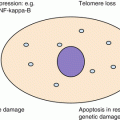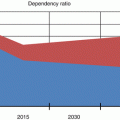© The Editor(s) 2018
Balakrishnan Kichu R. Nair (ed.)Geriatric Medicinehttps://doi.org/10.1007/978-981-10-3253-0_77. Diagnosis and Management of Depressed Mood in the Older Person
(1)
University of Newcastle, Newcastle, NSW, Australia
(2)
Director of Medical Services, Hunter New England Mental Health, Hunter New England Local Health District, Newcastle, NSW, Australia
Key Points
Depressive symptoms are not synonymous with a depressive disorder.
There is a wide range of explanations for depressive symptoms, many of which are not related to psychiatric illness.
The presence or absence of melancholic symptoms is a core diagnostic distinction, particularly in the older individual.
Effective treatment of a major depressive episode includes pharmacological, social and psychological strategies.
The evidence for differential efficacy of antidepressants is modest.
Referrals from geriatricians to psychogeriatric services are common. This is a good thing. Geriatric medicine services are well placed to take a holistic view of a patient’s predicament. Attending to mental health issues, including seeking further advice if required, is an essential part of this task. Clinicians, families or carers of a patient (and sometimes the individual themselves) are often unaware of potentially reversible psychiatric morbidity. Erroneous ideas that link the ageing process itself to inevitable psychological distress or decline may underlie this.
The purpose of this chapter is to provide clinicians in geriatric medicine with a guide for confidently approaching a topic of frequent concern: diagnosis and treatment of depressed mood in the older person. Depression in older people is associated with significant morbidity and poor physical health outcomes [1]. Individuals over 70 years have the highest rates of suicide globally [2]. There is not scope here to cover other important and related issues, such as depressive symptoms in the context of established dementia or assessment of the patient with suicidal thoughts, the latter being an indication for specialist referral.
Harry is a 73-year-old retired train driver who lives in a rural area with his wife. He is being assessed by a geriatrician, as his general practitioner is concerned both about functional decline and increasingly difficult to control diabetes. Harry is an ex-smoker with poorly controlled hypertension for many years. Six years ago he was diagnosed with type 2 diabetes; he has been on oral hypoglycaemic agents but his glycaemic control is poor, and he may soon require insulin therapy. He had coronary artery stenting 2 years ago for ischaemic heart disease. There is no history of previous psychiatric problems, and he has only used alcohol very occasionally. His partner reports a history over the past 2 years (though it may be longer) of increasing lethargy and social withdrawal (he has stopped playing darts and attending an exercise group). He appears sad and flat. Around a year ago, his general practitioner commenced sertraline. The dose is now 100 mg mane. His wife feels he is slowly worsening. She is immensely frustrated that he sits on the couch watching television all day, initiates little conversation, shows minimal interest in family affairs and needs prompting to tackle tasks such as washing the dishes or lawn mowing. Harry himself is unconcerned, and is grateful when a meal is prepared for him. Because he has not responded to the sertraline, the geriatrician requests a psychogeriatric review.
7.1 Diagnosis of Depression
Does Harry have depression? Because of multiple meanings, the word itself can be problematic. In a clinical setting, use of the term depressive symptoms may be more useful. This reflects an awareness that multiple medical and psychiatric disorders present with depressed mood, as do non-pathological reactions to the vicissitudes of later life. Bereavement, later life existential distress, executive dysfunction and physical illness need to be considered. A common diagnostic classification system such as the Diagnostic and Statistical Manual of Mental Disorders 5th edition, known as the DSM-5 [3], includes multiple psychiatric disorders that present with depressed mood. It should come as no surprise that psychiatrists are particularly interested in assessing for major depressive episode (MDE—as part of either a unipolar major depressive disorder or bipolar disorder), as missing this common and largely treatable disorder leads to increased morbidity and mortality. This should not, however, imply that subsyndromal depressive symptoms require no attention—these are common and not only cause significant morbidity but are a risk factor for development of MDE [4]. Further, comorbid psychological problems are also common. For example, a subset of the bereaved develops a mood disorder.
‘Depression’ is commonly understood by the medical community to mean a MDE (a depressive episode), and as this is a major focus of an initial psychogeriatric assessment, diagnostic issues around a MDE will be emphasized here.
Because of the wide differential diagnosis and risks of inappropriate (or non) treatment, it is important to attend carefully to the diagnostic process. This is particularly salient given the increasing awareness of the risks of antidepressant medications in the elderly [5].
Initially, physical causes must be addressed and excluded. This is almost always done when referral from a geriatrician is made. Importantly, however, these problems do not preclude psychiatric comorbidity, so an ‘exclusion’ approach is of limited value. An important exception is delirium. Florid, hyperactive delirium is rarely mistaken for depression; however, the less common presentation of a hypoactive delirium can present similarly to a MDE. If there is a history of very recent onset changes in the context of physical illness (or even if no cause has been identified), caution should be taken in diagnosing a depressive episode—particularly as antidepressant therapy can worsen a delirium from its own adverse effects, such as anticholinergic activity or hyponatraemia.
A full history is necessary, with emphasis on presenting psychiatric symptoms, previous mental health problems as well as the developmental history. The latter informs the assessment in terms of personality traits and identification of risk factors for psychiatric disorders and allows for cautious speculation as to why these particular symptoms may be presenting now. Often the information that contributes to understanding the genesis of symptoms that can mimic a depressive illness, such as chronic suicidal ideation, can be found here.
Screening for MDE symptoms using a classification such as the DSM-5 paying attention to duration, impairment of function and a relatively recent departure from baseline is helpful. Chronic depressive symptoms are less likely to indicate a MDE and suggest that other possibilities, such as dysthymia or personality disorder, need to be explored.
It is worthwhile here to comment on diagnostic classifications, and other assessment tools, as their strengths and limitations must be understood before they can be used properly. Disagreements about the diagnosis of depression between medical practitioners are often based around this issue. Psychiatry, as a rule, treats syndromes rather than diseases with identified pathology. Like many other aspects of medicine, it uses consensus-derived definitions of what is ‘pathological’ to define a disorder, such as the DSM-5. Because we are using symptom descriptors rather than measured values, the diagnostic process can appear at times to be particularly subjective. However, if a clinician is trained in both eliciting psychological symptoms and descriptive phenomenology, it is possible to make a reasonably robust diagnosis. Indeed, the DSM itself is an exercise in improving diagnostic reliability, rather than validity. Whilst such diagnostic criteria offer a reliable starting point, they often cannot account for the existence or absence of comorbid psychological symptoms, and they can make no attempt to appreciate the patient’s real predicament. The reason why the individual is unwell now, what meaning these symptoms may have for the patient and what role the patient’s personality may play, both in the genesis and treatment of the problem, is not captured in a psychiatric diagnosis. A checklist approach to diagnosis, whilst useful for reliability in research and as a clinical heuristic, is simplistic and often of limited value.
As will be discussed below, there is a particularly useful diagnostic distinction to make for older patients, even when a MDE has been diagnosed. This is the concept of classification within MDE, namely, the notion of melancholic depression, which is a MDE specifier within DSM-5 [3]. The core distinction is that, in melancholic depression, vegetative symptoms (such as early morning waking, diurnal mood variation and psychomotor changes—either slowing or agitation) predominate. Anhedonia (total loss of pleasure in usual activities) is also frequently present. Thus, if a patient meets the requirement for MDE, some consideration should be given to whether the clinical picture is weighted in this regard.
Depression screening instruments and rating scales are useful for identifying who is likely to have a psychiatric illness and for tracking response to treatment, but they are no substitute for an assessment by an experienced clinician. These often detect symptoms without clinical weighting or reference to duration and severity, which risks exposing individuals with real psychological distress, but no psychiatric disorder, to treatments that are very unlikely to be effective and have real risks. A high score on the Geriatric Depression Scale denotes psychological distress and depressive symptoms but is not a diagnosis of a clinical mood episode. Rather, it is a screening instrument [6].
Risk for developing a depressive episode should be considered. Risk factors for developing late life depression include physical illness or disability, a personal history of depression, loss of spouse, subsyndromal depression, sleep disturbance and comorbid anxiety [7].
The corroborative history is crucial to determine the time course of change, premorbid personality and for the risk assessment.
The Mental State Examination (MSE) may reveal features supportive of a diagnosis of MDE, such as slow and monotonous speech, a restricted affect, pervasive low mood and suicidal ideation. However, there are multiple possible explanations for each of these, and none is pathognomonic for a particular psychiatric syndrome.
Cognitive screening is of limited use for making or refuting a diagnosis of a mood episode. It is well known that a depressive episode can compromise cognitive abilities, but this is not always the case. It could be argued that if clinical suspicion of a mood disorder is high, it is best to delay testing altogether, as an impaired performance can be misinterpreted by future readers of the medical record as an argument for a longstanding cognitive deficit, which may well not be the case.
Routine depression screening should also include checking for anaemia, infection, renal or hepatic failure, malnourishment and thyroid disease. A ‘subclinical’ thyroid disorder is often detected, as mood disorders themselves can alter thyroid function [8].
Brain imaging remains useful for excluding (rare) reversible causes such as a space-occupying lesion. MRI is preferable as the FLAIR sequence provides valuable information about subcortical pathology (particularly white matter disease) which is implicated in executive dysfunction—a common explanation for apparent depressive symptoms.
Stay updated, free articles. Join our Telegram channel

Full access? Get Clinical Tree





